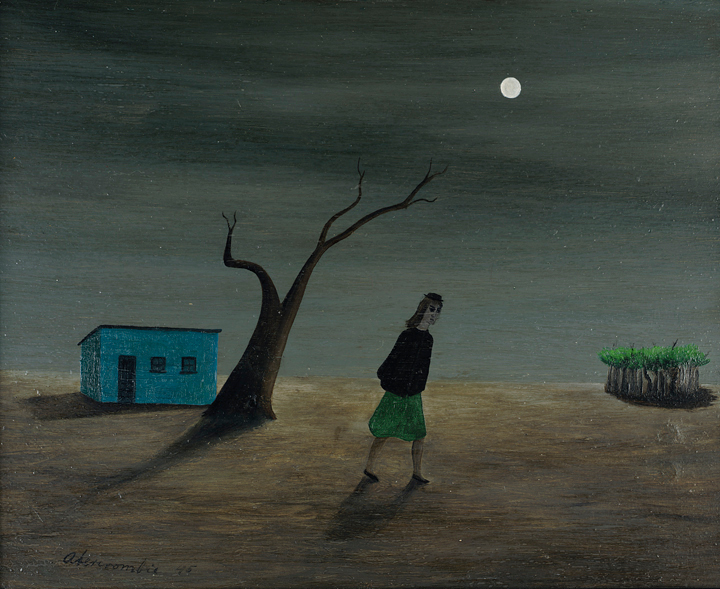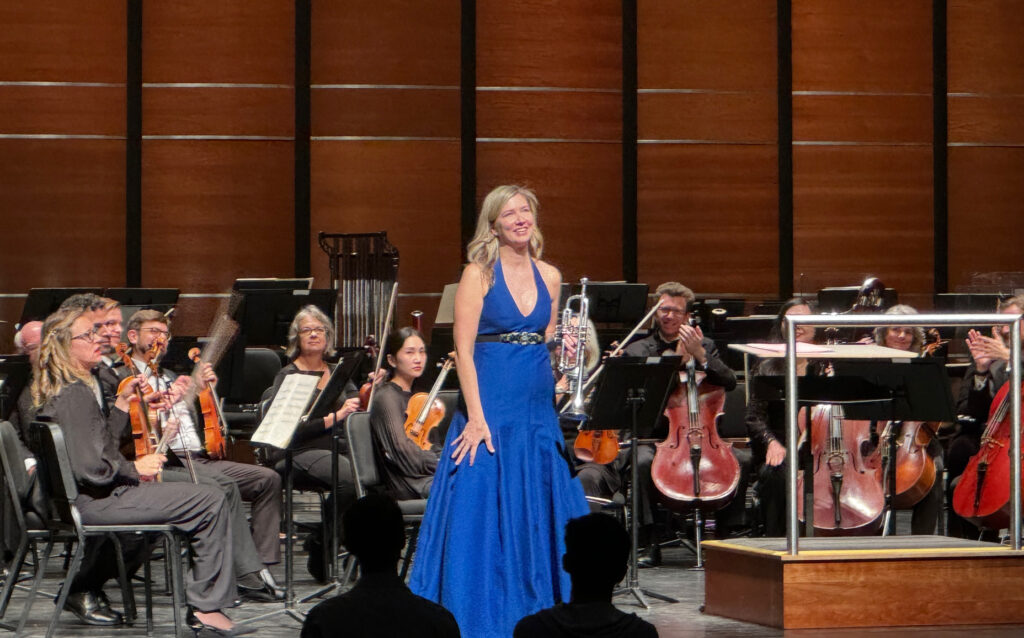The first half of the latest masterpiece performance by the Austin Symphony Orchestra was a notable departure from the usual classical fare.
While it concluded with the somnambulant Symphony No. 6 by Beethoven, the first portion had a distinctly international flavour. Three pieces were included: Three Symphonic Versions by the Spanish-born Julian Orbon; Rosa de Sal, for trumpet and chamber orchestra by the Indian-American composer Reena Esmail; and Bohemian Queen by Clarice Assad, a native of Brazil. It was inspired in part by the painting shown here.

On the three, only Orbon is deceased, having died in 1991. Composed in 1953, the Versions begins with a Pavane, which was a stately 16th-century dance. With shades of Seville wafting in the air, I imagined a more updated scenario while listening to it. The strings take to the road in a high-octane race with the horn section. Once the finish line is crossed, the vehicles slow to a gentle halt. The second movement, Conductus, draws inspiration from medieval poetry and religious processionals. I envisioned it as an outdoor scene, with a gradual awakening of nature as the sun rises. One can see little animals peeking out of their burrows, while flowers gradually unfold their petals. As the Sun rises higher, fish shimmer just below the surface. As the sound of the orchestra builds, noon hour is reached with the blare of the horns. Any residual shadows are banished. Having accomplished this task, the orchestra settles into a languid period of rest and repose. The final (short) movement, Xylophone, features that instrument with a mechanistic feel of a runaway production line.
Rosa de Sal and the Bohemian Queen were both performed by classical trumpeter Mary Elzabeth Bowden (pictured here), backed by the Symphony Orchestra. She is a Gold Medal Global Music Award winner, and brought to the fore an instrument which is usually relegated to the rear of the orchestra. I found the Rosa, by Renee Esmail, to be a less-than-gripping composition. It offers little more than listless background music for the trumpet. However, a welcome ethereal quality was established by the harp.

The first 2 movements Bohemian Queen by Clarice Assad was inspired by 2 paintings: Girl Searching (lead photo; painted 1945), and The Stroll (which depicts a woman walking outdoors with her cat, while a full Moon shines above). Both are by Gertrude Abercrombie, who died in 1977.
To quote from the Pennsylvania Academy of Fine Arts website about the Girl Searching work, “This enigmatic little painting includes many aspects of Abercrombie’s best narrative work of the 1940s and 1950s. Abercrombie has included herself in a spooky nocturnal landscape that was likely composed from a synthesis of memory and the imagination. She loved to invent mysterious and magical settings in which a few symbolically-charged objects or details interact in a provocative way. In a statement written for a 1945 exhibition catalogue, Abercrombie described this process. ‘I am not interested in complicated things nor in the commonplace,’ she wrote. ‘I like and like to paint simple things that are a little strange. My work comes directly from my inner consciousness and it must come easily. It is a process of selection and reduction.’”
This composition was actually created by Assad for Bowden in 2022. Certainly, the spooky landscape is evoked in the very beginning of the first movement. The trumpet gently joins with a plaintive call followed by some rapid, searching questions that the orchestra endeavours to answer. Bowden switches from one type of trumpet to another before the first movements abruptly ends.
The second movement, inspired by the 1943 painting The Stroll (not The Troll, as in the printed programme) starts with a brief trumpet solo. The orchestra joins in with a lovely melody and it becomes more like a Big Band instrumental than a symphonic piece. The third movement put me in mind of a Spanish matador. A bit of an identity crisis is on display as Bowden’s mastery of the trumpet continually spars with the orchestra about what direction to take. The programme notes indicate it was inspired by parties Abercrombie gave in Hyde Park, where she used to sit in as a pianist herself and play with jazz’s great masters.
With an eclectic selection of 20th and 21st-century instrumental compositions, this was overall a very fine and satisfying concert.
Image of the painting used from the website https://clariceassad.com/work/2022-gertrude-abercrombie
Photo of Bowden by C. Cunningham